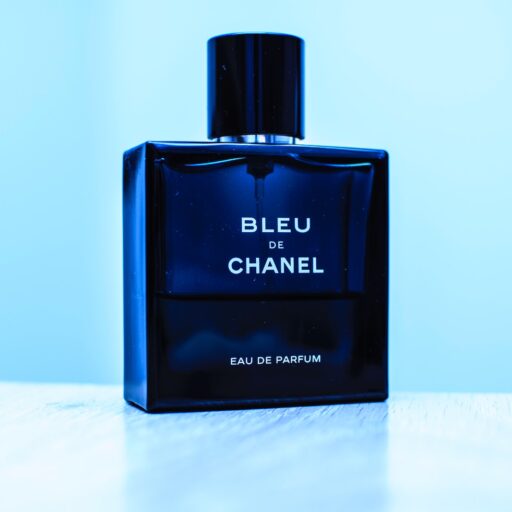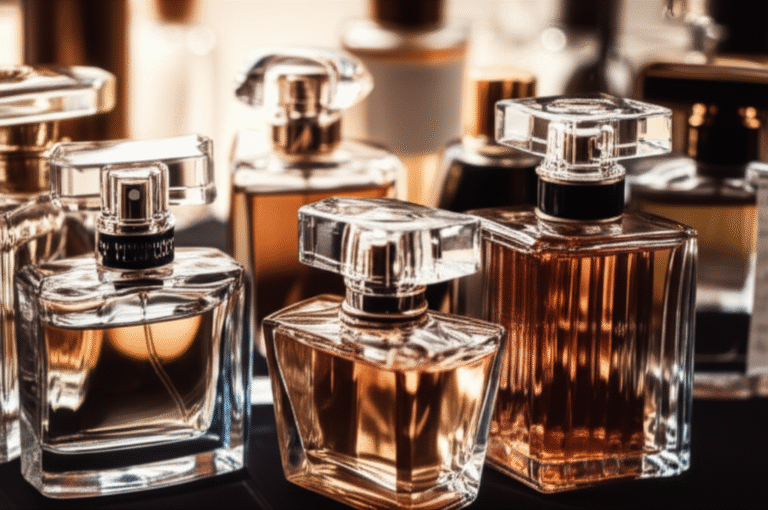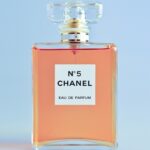Support our educational content for free when you purchase through links on our site. Learn more
What Are Designer Perfumes Called? 12 Iconic Brands Explained ✨ (2025)
Ever caught yourself wondering, “What exactly are designer perfumes called, and why do they smell so irresistible?” You’re not alone! Designer perfumes are more than just fragrances—they’re luxury statements bottled by the world’s most prestigious fashion houses. From the timeless elegance of Chanel No. 5 to the bold allure of Gucci Bloom, these scents carry stories, style, and sophistication that go far beyond their aromas.
But here’s a juicy secret: not all perfumes are created equal. What sets designer perfumes apart from niche or mass-market scents? And how do you pick the perfect one that feels like you? Stick around as we unravel the mystery behind designer perfumes, explore 12 iconic brands, and reveal insider tips from the perfumers at Perfume Brands™. By the end, you’ll know exactly what these perfumes are called—and which ones deserve a spot on your vanity.
Key Takeaways
- Designer perfumes are fragrances created by luxury fashion houses like Dior, Chanel, and Gucci, reflecting their brand’s style and prestige.
- They are mass-produced but maintain high quality, making them accessible yet luxurious.
- Designer perfumes differ from niche scents in production scale, marketing, and scent complexity.
- The history of designer perfumes is deeply tied to fashion evolution, with iconic launches like Chanel No. 5 shaping the industry.
- Choosing the right designer perfume involves understanding your scent preferences, skin chemistry, and occasion.
- Proper storage and care can extend the life and freshness of your designer fragrance.
- Sustainability is becoming a priority, with many brands adopting eco-friendly sourcing and packaging.
Ready to find your signature scent? Explore top designer perfumes like Dior J’adore, Gucci Bloom, and Chanel No. 5 on:
Table of Contents
- Quick Tips and Facts About Designer Perfumes ✅
- What Exactly Are Designer Perfumes? Unpacking the Name 🕵️♂️
- The Glamorous History of Designer Perfumes: From Couture to Fragrance 💃
- Top 10 Most Iconic Designer Perfume Brands You Should Know 🌟
- Designer vs. Niche Perfumes: What’s the Real Difference? 🤔
- How Designer Perfumes Are Made: The Art and Science Behind the Scent 🧪
- Popular Designer Perfume Collections and Their Signature Scents 🎨
- Why Do Designer Perfumes Cost More? Breaking Down the Price Tag 💸
- How to Choose the Perfect Designer Perfume for You 💖
- Caring for Your Designer Perfume: Storage and Longevity Tips 🕰️
- Celebrity-Endorsed Designer Perfumes: Hits and Misses 🎬
- Sustainability in Designer Perfumes: Are Luxury Brands Going Green? 🌿
- Quick Comparison Table: Designer Perfumes vs. Mass-Market Fragrances 📊
- Conclusion: Why Designer Perfumes Still Reign Supreme 👑
- Recommended Links for Perfume Lovers 🔗
- Frequently Asked Questions (FAQ) About Designer Perfumes ❓
- Reference Links and Sources 📚
Quick Tips and Facts About Designer Perfumes ✅
Welcome to the dazzling world of designer perfumes! Before we dive deep, here are some quick nuggets from the perfumers at Perfume Brands™ to get you started:
- Designer perfumes are fragrances created and marketed by well-known fashion houses or luxury brands like Dior, Gucci, Chanel, and Versace.
- They are mass-produced to meet global demand but maintain a high standard of quality and style.
- Typically, they are more affordable and accessible than niche perfumes but still offer a luxurious scent experience.
- Designer perfumes often feature signature notes that align with the brand’s identity—think Dior’s J’adore with its floral elegance or Gucci’s Bloom with its rich gardenia and jasmine.
- These perfumes benefit from massive advertising budgets, including celebrity endorsements and glamorous campaigns.
- They are widely available in department stores, online retailers, and specialty shops.
- Designer perfumes usually have a lighter concentration of fragrance oils compared to niche perfumes, which affects longevity and sillage.
- Popular examples include Flowerbomb by Viktor & Rolf, Light Blue by Dolce & Gabbana, and Black Opium by Yves Saint Laurent.
Want to learn more about how these perfumes fit into the broader perfume world? Check out our related article on What Is a Fragrance House? 12 Secrets You Didn’t Know! 🏰.
What Exactly Are Designer Perfumes? Unpacking the Name 🕵️♂️
When you hear “designer perfume,” what springs to mind? Is it the glitzy bottle, the celebrity face on the ad, or the scent that turns heads? Let’s unpack this term.
Definition and Characteristics
Designer perfumes are fragrances produced by fashion houses or luxury brands that have established themselves in the style or beauty industry. These brands leverage their prestige and style to create perfumes that reflect their aesthetic.
- Mass production: Unlike niche perfumes, designer scents are produced in large quantities to satisfy worldwide demand.
- Brand identity: The scent often embodies the brand’s image—elegant, bold, youthful, or classic.
- Accessibility: They are sold in mainstream retail outlets, making them easy to find.
- Marketing muscle: Heavy investment in advertising and celebrity endorsements helps these perfumes become household names.
Examples of Designer Perfume Brands
| Brand | Signature Perfume(s) | Brand Style |
|---|---|---|
| Dior | J’adore, Sauvage | Elegant, timeless |
| Gucci | Bloom, Guilty | Bold, modern |
| Chanel | No. 5, Coco Mademoiselle | Classic, sophisticated |
| Dolce & Gabbana | Light Blue, The One | Mediterranean, sensual |
| Versace | Bright Crystal, Dylan Blue | Glamorous, vibrant |
These names are not just perfumes; they are style statements that echo the brand’s ethos.
The Glamorous History of Designer Perfumes: From Couture to Fragrance 💃

Designer perfumes have a rich history intertwined with fashion. The journey from runway to fragrance counter is a fascinating tale.
Origins: When Fashion Met Fragrance
In the early 20th century, fashion houses like Chanel pioneered the idea of extending their brand into perfumes. Coco Chanel’s No. 5, launched in 1921, was revolutionary—not just a scent but a symbol of modern femininity.
Evolution Over the Decades
- 1950s-70s: Designer perfumes became a staple of luxury lifestyle, with brands like Dior and Yves Saint Laurent launching iconic scents.
- 1980s-90s: The rise of celebrity endorsements and extravagant advertising campaigns made designer perfumes household names.
- 2000s-present: The market exploded with new launches, designer collaborations, and the rise of celebrity fragrances (think Jennifer Lopez Glow or Britney Spears Fantasy).
Why This History Matters
Understanding this evolution helps you appreciate why designer perfumes carry such prestige and cultural weight. They’re not just scents; they’re fashion history bottled.
For a deeper dive, explore our Perfume History and Evolution section.
Top 10 Most Iconic Designer Perfume Brands You Should Know 🌟
Ready to meet the stars of the designer perfume world? Here’s our curated list of the top 10 iconic brands that have shaped the industry:
| Rank | Brand | Notable Perfumes | Why They Shine |
|---|---|---|---|
| 1 | Chanel | No. 5, Coco Mademoiselle | Timeless classics, unmatched elegance |
| 2 | Dior | J’adore, Sauvage | Sophisticated, versatile scents |
| 3 | Gucci | Bloom, Guilty | Bold, youthful, and trendy |
| 4 | Yves Saint Laurent | Black Opium, Libre | Edgy, modern, and seductive |
| 5 | Dolce & Gabbana | Light Blue, The One | Mediterranean warmth and sensuality |
| 6 | Versace | Bright Crystal, Dylan Blue | Glamour and vibrant energy |
| 7 | Tom Ford | Black Orchid, Oud Wood | Luxurious, bold, and mysterious |
| 8 | Prada | Candy, La Femme | Innovative, playful, and elegant |
| 9 | Calvin Klein | Eternity, CK One | Clean, fresh, and universally loved |
| 10 | Burberry | My Burberry, Mr. Burberry | British heritage with modern flair |
Each brand has its own signature style and loyal fan base. For example, Chanel No. 5 is legendary for its aldehydic floral bouquet, while Dior Sauvage is a modern masculine powerhouse loved worldwide.
Designer vs. Niche Perfumes: What’s the Real Difference? 🤔
Ah, the age-old debate! Designer or niche? Which perfume kingdom should you pledge allegiance to? Let’s break it down.
What Are Niche Perfumes?
Niche perfumes are artisan fragrances crafted in small batches by independent houses. They focus on unique, often experimental scents with high-quality natural ingredients. Examples include Amouage, Mancera, and Maison Francis Kurkdjian.
Key Differences Table
| Feature | Designer Perfumes | Niche Perfumes |
|---|---|---|
| Production Scale | Mass-produced | Small batch, limited quantities |
| Price Range | Moderate to high | Generally higher due to exclusivity |
| Ingredient Quality | High, but often includes synthetics | Premium natural and rare ingredients |
| Availability | Widely available in stores and online | Select boutiques, luxury outlets |
| Marketing Approach | Heavy advertising, celebrity endorsements | Minimal marketing, word-of-mouth |
| Scent Complexity | Often simpler, crowd-pleasing | Complex, artistic, and unique |
| Longevity and Sillage | Moderate | Usually stronger and longer-lasting |
Our Take at Perfume Brands™
Both have their charm. Designer perfumes are perfect for everyday wear, gifting, and those who love recognizable scents. Niche perfumes are for the adventurous, scent connoisseurs seeking exclusivity and artistry.
For more on this, see our detailed comparison in Designer vs. Niche Perfume – Which is Best?.
How Designer Perfumes Are Made: The Art and Science Behind the Scent 🧪
Ever wondered how your favorite designer perfume goes from concept to bottle? Let’s pull back the curtain.
Step 1: Inspiration and Concept
The brand’s creative team and perfumers collaborate to capture the brand’s essence and target audience. They decide on the scent family (floral, woody, oriental, fresh) and mood.
Step 2: Ingredient Selection
Using a blend of natural essential oils and synthetic aroma molecules, perfumers craft the fragrance. Designer perfumes often balance cost, longevity, and mass appeal.
Step 3: Formulation and Testing
Multiple iterations are created and tested for scent profile, longevity, and skin reaction. Feedback from focus groups and brand executives shapes the final formula.
Step 4: Packaging Design
The bottle and packaging reflect the brand’s identity—think sleek, minimalist Chanel bottles or bold, ornate Versace flacons.
Step 5: Production and Distribution
Once approved, the perfume is produced at scale in specialized factories, then shipped worldwide.
Fun Fact
Designer perfumes often contain fragrance concentrations like Eau de Parfum (EDP) or Eau de Toilette (EDT), affecting intensity and wear time.
Popular Designer Perfume Collections and Their Signature Scents 🎨
Designer brands often launch collections that tell a story or explore variations on a theme. Here are some fan favorites:
| Brand | Collection Name | Signature Scent(s) | Description |
|---|---|---|---|
| Dior | J’adore Collection | J’adore Eau de Parfum | Luxurious floral bouquet with jasmine and rose |
| Gucci | Bloom Collection | Bloom Eau de Parfum | Rich gardenia and tuberose, fresh and feminine |
| Yves Saint Laurent | Black Opium Line | Black Opium Eau de Parfum | Coffee, vanilla, and white flowers, edgy and sweet |
| Dolce & Gabbana | Light Blue Series | Light Blue Eau de Toilette | Citrusy, fresh, Mediterranean summer vibes |
| Versace | Bright Crystal Range | Bright Crystal Eau de Toilette | Floral, fruity, and fresh |
Why Collections Matter
They allow brands to experiment with variations while maintaining a recognizable theme. It’s like having a wardrobe of scents for different moods!
Why Do Designer Perfumes Cost More? Breaking Down the Price Tag 💸
You might wonder why designer perfumes often come with a hefty price tag. Here’s the lowdown:
Factors Influencing Cost
- Brand Prestige: The name itself adds value. Chanel or Dior logos carry weight.
- Quality Ingredients: While not always niche-grade, designer perfumes use quality raw materials balanced with synthetics for consistency.
- Packaging: Luxurious bottles, intricate designs, and heavy glass add to costs.
- Marketing & Advertising: Multi-million dollar campaigns, celebrity endorsements, and global launches are expensive.
- Research & Development: Creating a signature scent takes time, talent, and resources.
- Distribution: Worldwide logistics and retail markups factor in.
Is It Worth It?
Absolutely! You’re paying for a complete luxury experience—not just the scent but the story, the bottle, and the prestige.
How to Choose the Perfect Designer Perfume for You 💖
Choosing a designer perfume can feel like dating—there are many options, and you want the perfect match!
Step-by-Step Guide
- Identify Your Scent Preferences: Floral, woody, fresh, oriental?
- Consider the Occasion: Daily wear, special events, office?
- Test on Skin: Always try before buying; perfumes react differently on each person.
- Sample and Wear: Wear the sample for a day to see how it evolves.
- Check Longevity: Does it last long enough for your needs?
- Read Reviews: See what others say on sites like Amazon or Fragrantica.
- Trust Your Instinct: If it makes you feel confident and happy, it’s a keeper!
Pro Tip
Visit department stores or specialty boutiques to get expert advice and try multiple scents.
Explore more tips in our Perfume Guides.
Caring for Your Designer Perfume: Storage and Longevity Tips 🕰️
Want your designer perfume to smell fresh and last longer? Here’s how to treat it right:
Storage Tips
- Keep away from sunlight: UV rays break down fragrance molecules.
- Store in a cool, dry place: Avoid humidity and heat fluctuations.
- Keep the bottle tightly closed: Prevents evaporation and oxidation.
- Original packaging: Store perfumes in their boxes for extra protection.
Usage Tips
- Apply to pulse points: Wrists, neck, behind ears for better diffusion.
- Don’t rub wrists together: It can alter the scent.
- Layer with matching body products: Many brands offer lotions and shower gels to extend scent life.
Fun Fact
Proper storage can extend your perfume’s shelf life from 3 to 5 years or more!
Celebrity-Endorsed Designer Perfumes: Hits and Misses 🎬
Celebrities often collaborate with designer brands or launch their own fragrances. Let’s look at some notable examples:
| Celebrity | Perfume Name | Brand/Designer | Reception |
|---|---|---|---|
| Jennifer Lopez | Glow | JLo (Designer licensed) | Iconic, fresh, and widely loved |
| Britney Spears | Fantasy | Elizabeth Arden | Sweet, youthful, commercial hit |
| Ariana Grande | Ari | Ariana Grande | Popular among younger audiences |
| Rihanna | Reb’l Fleur | Rihanna | Bold, sensual, well-reviewed |
| Nicki Minaj | Onika | Nicki Minaj | Fun, quirky, mixed reviews |
Our Insight
Celebrity perfumes can be a fun introduction to designer scents but sometimes lack the complexity of traditional designer lines. Still, many have become cult favorites!
Sustainability in Designer Perfumes: Are Luxury Brands Going Green? 🌿
The fragrance industry is waking up to environmental concerns, and designer brands are stepping up.
What’s Happening?
- Sustainable sourcing: Brands like Chanel and Gucci are investing in ethically sourced ingredients.
- Eco-friendly packaging: Recyclable materials and refillable bottles are becoming more common.
- Carbon footprint reduction: Some brands offset emissions and use renewable energy in production.
- Transparency: Increasingly, brands disclose ingredient origins and manufacturing processes.
Challenges
- Balancing luxury aesthetics with sustainability can be tricky.
- Natural ingredients may be limited or more expensive.
Why It Matters
As consumers, your choices push brands toward greener practices. Supporting sustainable designer perfumes means luxury can be kind to the planet.
Quick Comparison Table: Designer Perfumes vs. Mass-Market Fragrances 📊
To wrap up this section, here’s a handy table comparing designer perfumes to typical mass-market fragrances:
| Feature | Designer Perfumes | Mass-Market Fragrances |
|---|---|---|
| Brand Recognition | High (luxury fashion houses) | Low to moderate |
| Quality of Ingredients | High to moderate | Often lower, more synthetics |
| Packaging | Luxurious, artistic | Simple, cost-effective |
| Price | Moderate to high | Low to moderate |
| Availability | Department stores, boutiques, online | Drugstores, supermarkets, online |
| Marketing | Heavy investment, celebrity endorsements | Minimal or generic advertising |
| Scent Complexity | Rich, layered | Often simple, designed for mass appeal |
| Longevity | Moderate to long-lasting | Variable, often shorter wear time |
👉 CHECK PRICE on:
- Dior J’adore: Amazon | Sephora | Dior Official Website
- Gucci Bloom: Amazon | Sephora | Gucci Official Website
- Chanel No. 5: Amazon | Sephora | Chanel Official Website
Ready to explore more? Dive into our Fragrance Reviews and Luxury Brands for detailed insights and recommendations!
Conclusion: Why Designer Perfumes Still Reign Supreme 👑
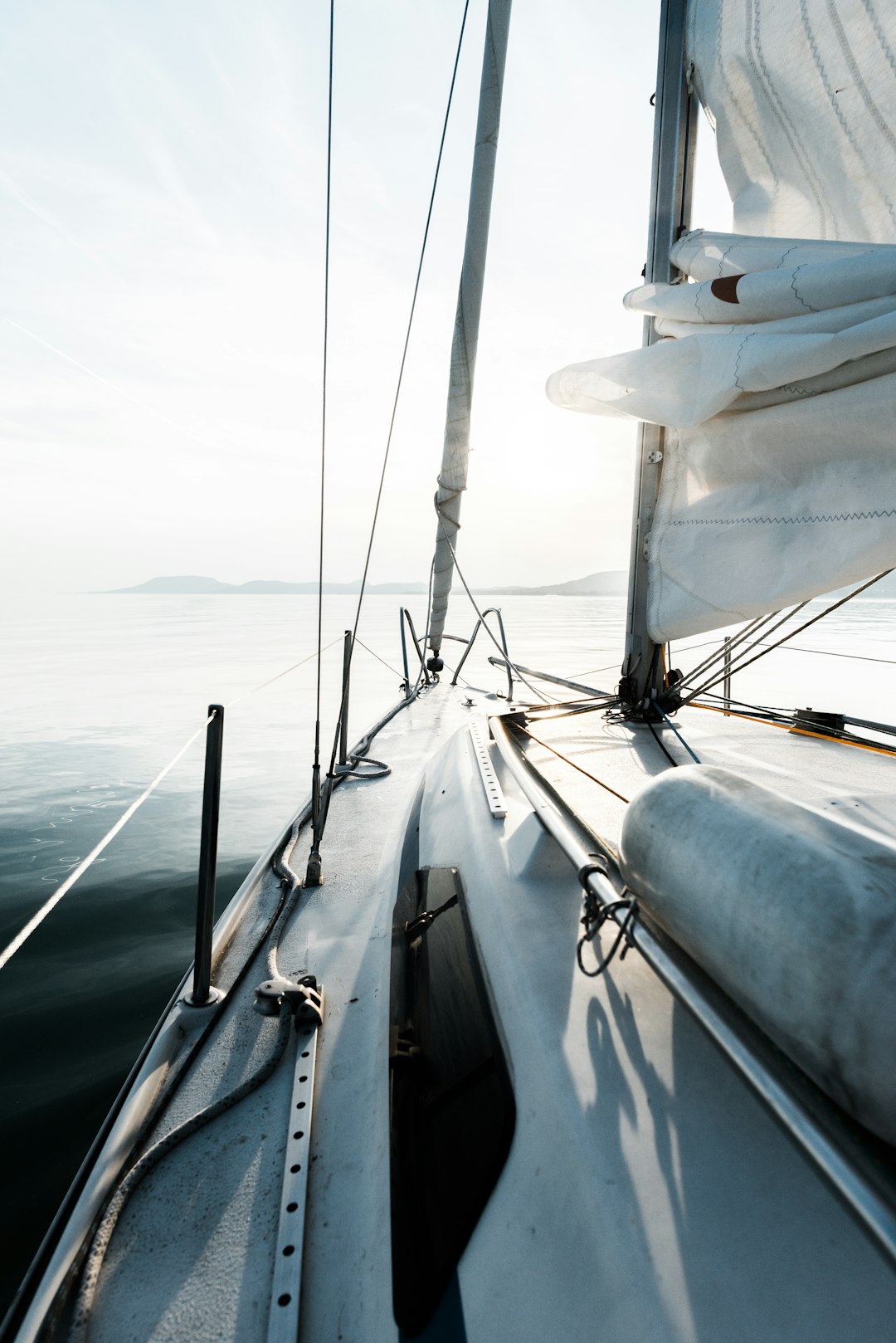
After our deep dive into the world of designer perfumes, it’s clear why these fragrances continue to captivate millions worldwide. Designer perfumes combine luxury, accessibility, and artistry in a way that few other fragrance categories can match. They offer a signature scent experience that reflects the style and prestige of iconic fashion houses like Chanel, Dior, and Gucci.
Positives of Designer Perfumes:
- Wide availability makes it easy to find and try your favorites.
- High-quality ingredients balanced with synthetics ensure consistent, crowd-pleasing scents.
- Beautiful packaging that doubles as collectible art.
- Strong brand stories and marketing create emotional connections.
- Variety of scent families and concentrations to suit different preferences and occasions.
Negatives:
- Sometimes perceived as less unique compared to niche perfumes due to mass production.
- Price points can be high, reflecting brand prestige and marketing costs.
- Some may find the scent profiles more mainstream or less adventurous.
Our Confident Recommendation
If you’re looking for a reliable, elegant, and stylish fragrance that aligns with your fashion sensibility, designer perfumes are a fantastic choice. They strike a perfect balance between luxury and accessibility, making them ideal for everyday wear, gifting, or special occasions. For those craving exclusivity and artisan craftsmanship, niche perfumes are worth exploring, but designer perfumes remain the go-to for timeless glamour.
Remember, the best perfume is the one that makes you feel amazing and confident—whether it’s a Dior J’adore, Gucci Bloom, or Chanel No. 5. Now that you know what designer perfumes are called and what makes them special, you’re ready to find your signature scent!
Recommended Links for Perfume Lovers 🔗
👉 Shop Iconic Designer Perfumes:
-
Dior J’adore:
Amazon | Sephora | Dior Official Website -
Gucci Bloom:
Amazon | Sephora | Gucci Official Website -
Chanel No. 5:
Amazon | Sephora | Chanel Official Website
Books to Deepen Your Perfume Passion:
- Perfumes: The A-Z Guide by Luca Turin & Tania Sanchez — Amazon
- The Art of Perfumery by G.W. Septimus Piesse — Amazon
- Fragrance: The Story of Perfume from Cleopatra to Chanel by Edwin T. Morris — Amazon
Frequently Asked Questions (FAQ) About Designer Perfumes ❓
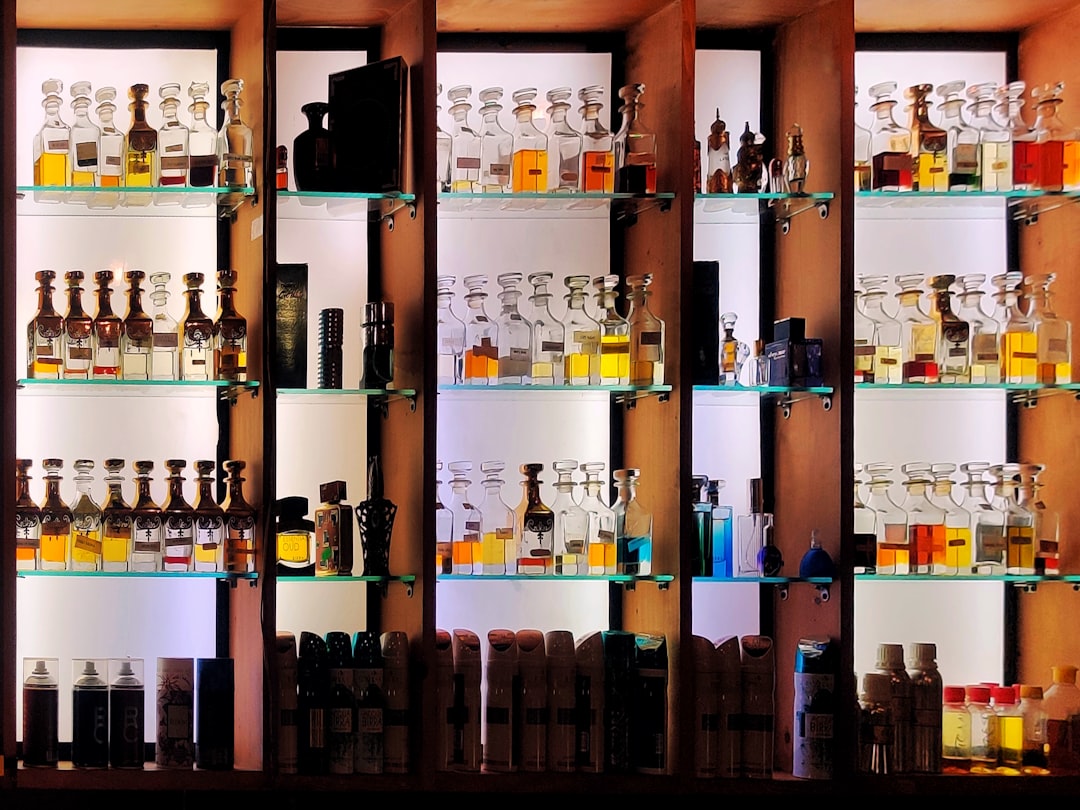
What are the most popular designer perfume brands for women?
The most popular designer perfume brands for women include Chanel, Dior, Gucci, Yves Saint Laurent, and Dolce & Gabbana. These brands have iconic fragrances like Chanel No. 5, Dior J’adore, and Gucci Bloom that have stood the test of time. Their popularity stems from a combination of timeless scent profiles, elegant packaging, and strong brand heritage. These perfumes are widely available and appeal to a broad audience, making them favorites for both everyday wear and special occasions.
Read more about “What Is the Name for Perfume in Products? 10 Secrets Revealed! 🌸 (2025)”
How do I choose the right designer perfume for my skin type?
Choosing a perfume that complements your skin type is crucial because skin chemistry affects how a fragrance smells and lasts. For example:
- Oily skin tends to hold scents longer and can amplify fragrance intensity. You might prefer lighter concentrations like Eau de Toilette to avoid overpowering.
- Dry skin may cause perfumes to fade quickly; opt for Eau de Parfum or layering with matching body lotions to enhance longevity.
- Sensitive skin requires hypoallergenic or fragrance-free products; test perfumes on a small patch before full application.
Always test perfumes on your skin rather than paper strips, and wear them throughout the day to see how they evolve. Visiting a store and consulting fragrance experts can also help you find the perfect match.
Read more about “What Are the 10 Most Popular Perfumes? Discover 2025’s Top Scents! 🌟”
What are the differences between designer and niche perfumes?
Designer perfumes are produced by fashion houses and luxury brands with a focus on mass appeal, accessibility, and brand identity. They are widely available, often have moderate fragrance concentrations, and benefit from large marketing budgets. Examples include Dior, Gucci, and Chanel.
Niche perfumes are created by independent artisan houses focusing on unique, complex, and often experimental scents with high-quality natural ingredients, produced in limited quantities. Brands like Amouage, Mancera, and Maison Francis Kurkdjian exemplify this category. Niche perfumes tend to be more expensive, exclusive, and longer-lasting.
Read more about “What Is a Fragrance House? 12 Secrets You Didn’t Know! 🏰 (2025)”
Are designer perfumes worth the high price tag compared to affordable alternatives?
Yes, designer perfumes are generally worth the investment if you value:
- Consistent quality and craftsmanship in scent formulation.
- Luxurious packaging and brand prestige that enhances the overall experience.
- Reliable availability and customer support from reputable retailers.
- A scent that aligns with your personal style and occasions.
Affordable alternatives may offer decent scents but often lack the depth, longevity, and refinement of designer perfumes. However, if budget is a concern, many designer brands offer smaller sizes or Eau de Toilette versions that provide a taste of luxury at a lower cost.
How can I tell if a designer perfume is authentic?
Authenticity is key to enjoying your designer perfume fully. To ensure you’re buying genuine products:
- Purchase from authorized retailers, official brand websites, or reputable department stores.
- Check the packaging details: authentic perfumes have precise printing, batch codes, and quality seals.
- Be wary of prices that seem too good to be true—they often indicate counterfeit products.
- Use online resources like Fragrantica or brand customer service to verify batch codes.
Can I layer designer perfumes with other scents?
Absolutely! Layering can create a unique, personalized fragrance. Many designer brands offer complementary products like body lotions, shower gels, and deodorants that enhance and extend the scent. For example, layering Dior J’adore Eau de Parfum with its matching body lotion can boost longevity and scent intensity. Just be cautious mixing very different scent families to avoid clashing aromas.
Read more about “How Many Fragrances Exist? Discover 17,000+ Scents! 🌍”
Reference Links and Sources 📚
- Chanel Official Website
- Dior Official Website
- Gucci Official Website
- Scent City: Designer v Niche Perfume – Which is Best?
- LuxSB: What’s the Difference Between Designer and Niche Perfume?
- Scentbox: Designer Fragrance Subscription
- Fragrantica: Perfume Encyclopedia
- Perfume Brands™ – What Is a Fragrance House? 12 Secrets You Didn’t Know! 🏰
Dive into these trusted resources to verify facts and deepen your perfume knowledge. Your journey to finding the perfect designer fragrance just got a whole lot easier!
